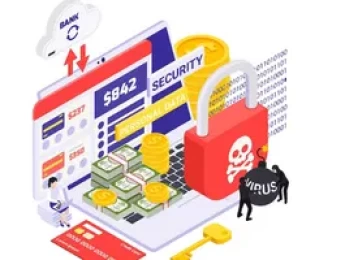Integrating information technology into business processes is essential for organisational success. IT encompasses systems software, application software, hardware, networks, and databases. The Chief Information Officer (CIO) leads the IT department, facing pressures to deliver systems that meet evolving organisational needs.
Due to its complexity and rapid change, the industry often fails to provide user-friendly technology. This challenge is increasing, making flawless execution even more difficult. However, performance can improve by prioritising quality in IT development and support, focusing on user satisfaction, integration, and flexibility.
Quality management involves enforcing standards and embedding them into the organisation's IT culture to ensure applications and support meet the necessary criteria.
Upon completion of this course, participants will be able to:
- Have a complete overview of quality management.
- Understand the need for IT quality management.
- Define user and stakeholder requirements.
- Understand key IT quality management principles.
- Review the International Framework for Quality Management.
This course is designed for any role with a heavy demand for IT and requires a means to depict and monitor their quality in an easily accessible format. It would be most beneficial for:
- Technology Engineers
- Chief Technology Officers (CTO)
- Chief Information Officers (CIO)
- Enterprise Architect Team Members
- Design and Human-Computer Interaction Specialists
- Business Analysts
- Project Management Professionals
- Audit Compliance and Quality Personnel
- Operations Managers
- Senior Executives
Organisations are starting to make the connection between making
information available for consumption and leveraging it to be more agile
and productive. However, there is still much that can be achieved. As businesses look to improve productivity, it is becoming apparent that systems require more accurate, complete, and consistent data. Organisations must better link business processes and performance management to data and information quality.
This course will use various adult learning techniques to ensure maximum understanding, comprehension, and retention of the information presented. Participants will gain detailed knowledge by actively participating in seminars, group discussions, and real-life case studies. The delivery will be through presentations, group investigations, training DVDs, and interactive seminars.
Day 5 of each course is reserved for a Q&A session, which may occur off-site. For 10-day courses, this also applies to day 10
Section 1: An Overview of Quality Management
- Learn how to focus on implementing long-term solutions rather than installing short-term fixes to problems.
- Defining the top-quality goals and measures.
- How to apply quality management to IT development.
- Identifying characteristics and requirements of the customer and user.
Section 2: The Human Approach
- How to set quality measures and standards on customer or user wants and needs.
- Understand how to communicate clearly the function's mission, objectives, issues, and measures.
- Understanding key factors to identify human and social needs required with technology interaction.
- How to set the strategic design for success.
Section 3: International Standards & Quality Management Principles
- How to implement corrective action plans based on root cause analysis.
- Anticipating and addressing quality issues in specific areas.
- How to engage all Stakeholders in the quality process.
- What is ISO/IEC 9000 - Quality Management?
Section 4: Building on Quality Management Principles
- Understanding how to make quality a shared responsibility.
- How to promote knowledge sharing of best practices relative to quality management in IT.
- IT quality objectives and initiatives in the IT strategy.
- How to provide overall leadership in achieving IT quality objectives.
- Representing an end-to-end perspective of IT quality issues.
Section 5: Ensuring IT Quality Management & Measuring Success
- Incorporating and aligning quality measures and business objectives.
- How large should the quality function be?
- Tracking your performance using real-time stats.
- Understanding the objectivities and subjectivities in analytical outcomes.
- Driving your revenue and executive stakeholder reporting.
Upon successful completion of this training course, delegates will be awarded a Holistique Training Certificate of Completion. For those who attend and complete the online training course, a Holistique Training e-Certificate will be provided.
Holistique Training Certificates are accredited by the British Assessment Council (BAC) and The CPD Certification Service (CPD), and are certified under ISO 9001, ISO 21001, and ISO 29993 standards.
CPD credits for this course are granted by our Certificates and will be reflected on the Holistique Training Certificate of Completion. In accordance with the standards of The CPD Certification Service, one CPD credit is awarded per hour of course attendance. A maximum of 50 CPD credits can be claimed for any single course we currently offer.
- Course Code PI1-115
- Course Format Classroom, Online,
- Duration 5 days













